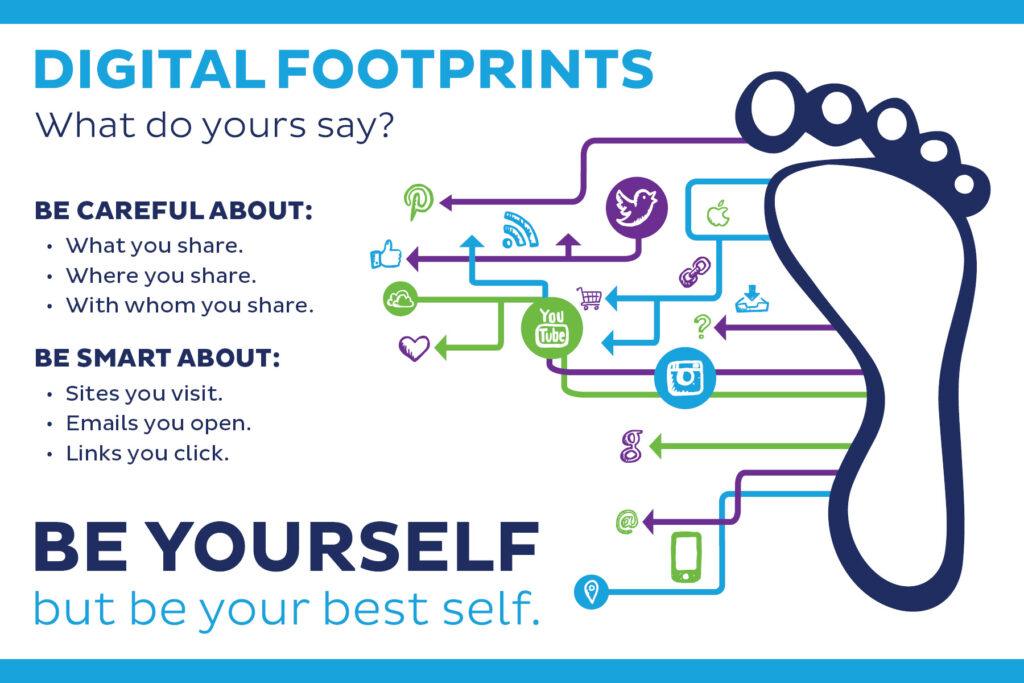
Digital Footprint: What is it? And why does it matter to me as a teacher and a learner?
Let’s start with the question what is a digital footprint? According to the Canadian Centre for Cyber Security, a digital footprint is “the trail of data you create while using the Internet. This trail of data comes from the websites you visit, the emails you send, and the information you submit or download online. You build your footprint both actively and passively” (Canadian Centre for Cyber Security, 2022). The Canadian Centre of Cyber Security also describes the differences between an active digital footprint and a passive digital footprint. An active digital footprint is “data left through intentional actions, such as posting on social media, filling out online forms, or agreeing to browser cookies.” A passive digital footprint is “data left unintentionally or unknowingly. This data is often collected by monitoring tied to your IP address. Websites and applications may install cookies on devices without disclosure, use location tracking, or log your activities” (Canadian Centre for Cyber Security, 2022). A potential risk stated by the Canadian Government regarding digital footprints is the potential for cyber threat actors to exploit and gain access to sensitive information.
I believe that as a teacher and a learner, it is important to realize the responsibility that comes with having a digital footprint. Either active or passive, teachers need to be aware of the potential harm their digital footprints could cause. John Parkin, the Course Leader for the BA Primary Education Studies at ARU Peterborough, states that “as a teacher, it’s important to control what children, parents and potential employers can see about you online” (A.R.U, 2020). As a teacher, there is the potential for your students or their parents/guardians to search your name on google, therefore it is vital that whatever digital footprint is found is appropriate. According to Parkin, an astonishing 92% of children will have a digital footprint before the age of two because of their parents posting photos of them on various social media outlets such as Facebook and Instagram. If you do decide to post something on social media, for example a post of solidarity with a social justice movement, then you need to have a good understanding of the issues at hand and be able to potentially discuss the topic with your class.
As a teacher, I believe that we should have discussions with our students about their digital footprints and how they could potentially impact their futures. When something is posted online, it is very likely that it will remain there forever, so children especially need to be cognizant of what they are doing. Googling your own name or asking your students to do that will show everyone how easy it is to create a digital footprint. Beyond the risks of spam and viruses, digital footprints can lead to credit cards/banking information being accessed as well as confidential personal information.